ST. GEORGE — With the spring motorcycle riding season underway and warmer weather fueling a surge in the number of bikes hitting Utah’s roadways comes an increase in the number of crashes. Protective riding gear may be the only defense a rider has against injury in a collision, which can mean the difference between this being their last riding season or having many more to come.
In 2016 nearly 980 motorcyclists were injured in more than 1,100 crashes on Utah’s roadways, while another 42 were killed, according to preliminary numbers provided by Utah Highway Patrol Trooper Gary Mower.
On March 23 crash totals were released showing there have been 27 crashes in the state so far, and eight of those were reportedly in Washington County, just one of 29 counties statewide.
This amounts to nearly one third of the crashes reported so far this year for the entire state occurring in Washington County, which has a population of roughly 138,000. To put this in perspective, Salt Lake County’s population is just over 1 million, Utah County is approximately 516,000, and Davis County’s population is 306,000.
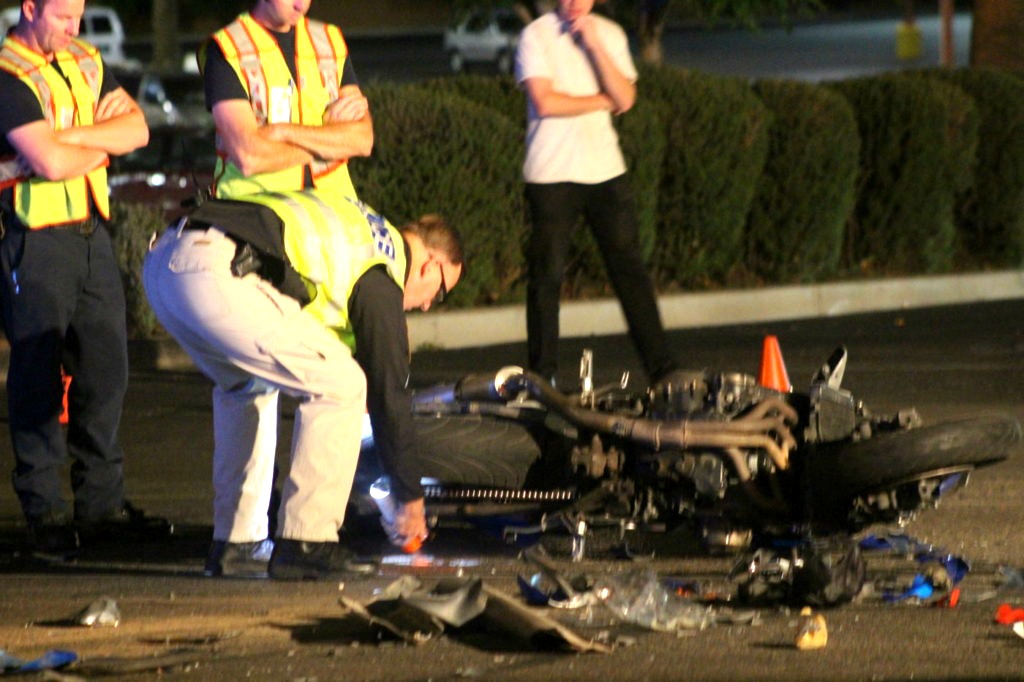
While crash numbers may appear low for the year, those totals may be deceiving, Utah Highway Patrol Public Information Officer Todd Royce said.
“The riding season is just starting,” Royce said, “and with more bikes out there the crash numbers start rising.”
Per mile traveled, the number of motorcyclists killed is about 26 times the number of deaths in their four-wheel counterparts, according to an analysis conducted by the Insurance Institute for Highway Safety.
One of the reasons for this is that motorcyclists face a greater risk of catastrophic injury than most other drivers involved in crashes, primarily due to the size variance between a motorcycle and a vehicle. At the same time the rider is exposed to hazards that occupants in a car are insulated from, which contributes to a higher injury and fatality rate, according to the National Highway Safety Transportation Board.
Fortunately, motorcyclists can minimize the risk of injury by being properly prepared, avoiding known hazards and exercising caution.
Proper riding gear provides protection and can help to prevent or reduce injury. In addition to a motorcycle helmet, standard motorcycle gear includes eye protection, full-fingered gloves, sturdy pants, long-sleeved jacket and over-the-ankle boots.
St. George Police Officer Dave McDaniel explained that officers assigned to the motor patrol wear safety gear, including Kevlar reinforced pants, heavy leather boots with steel toes and shanks, body armor, gloves, a crash-rated helmet and leather jacket. Additionally, they wear bullet-proof vests which is also reinforced with Kevlar and prevents injury to vital organs.
“This is proper riding equipment even though people may think it doesn’t look like it,” he said.
McDaniel also cautioned that bicycle helmets are not approved for motorcycle use. A handbook designed by the Motorcycle Safety Foundation can be found here.
Helmets – to wear or not to wear
Many studies show that wearing a helmet can protect a rider from a fatal head injury, and to date there are no studies showing that helmet use contributes to injury or death. As a matter of fact, “it is more important than any other single piece of gear,” according to the Motorcycle Safety Foundation.

Helmets help to protect a rider’s head in four ways. First, the outer shell resists penetration and abrasion, and then the interior of the shell is an impact-absorbing liner that absorbs more of the shock by slowly collapsing under impact, so both features spread the forces of impact throughout the helmet material.
Finally, the soft foam and cloth liner against the rider’s head increases comfort while providing a snug fit, coupled with the chin strap which keeps the helmet secured to the rider’s head, thus reducing the risk of it coming off in a crash.
Once those forces are absorbed by the helmet, the protective qualities no longer function properly, which is why experts suggest that the helmet be replaced after a crash. Even if the helmet shows no visible signs of damage, the internal safety features could be destroyed.
In general, a brand new helmet should feel slightly tight, coming into contact with most of the rider’s head and the sides of the face, without putting too much pressure on any specific area of the head.
To help determine which size to start with, placing a tape measure just above the eyebrows and above the ears will provide the measurement for the largest circumference of the head, which can be used when consulting a sizing chart found here.
A 2011 study conducted by John Hopkins Medicine reviewed 400,000 motorcycle crashes and the research group’s findings showed that wearing a helmet:
- Reduced the probability of being killed in a crash by 37 percent.
- Reduced the probability of suffering a traumatic brain injury by 64 percent.
- Reduced the probability of suffering a cervical spine injury by 22 percent.
Safety standards matter
There are two primary organizations setting safety standards for motorcycle helmets in the United States, the U.S. Department of Transportation, or DOT, and the Snell Memorial Foundation.
The DOT sets the minimum standards that all helmets sold for use on public streets must meet, and any organization producing helmets must meet or exceed federal standards.
Helmets in compliance with these standards weigh about 3 pounds, have a sturdy chin strap with solid rivets, and come with a “DOT” sticker on the inside showing that the helmet meets or exceeds federal requirements.
Snell Certification means the helmet exceeds the federal requirements and meets a higher, more rigorous standard using testing at one of the most advanced helmet testing labs in the world
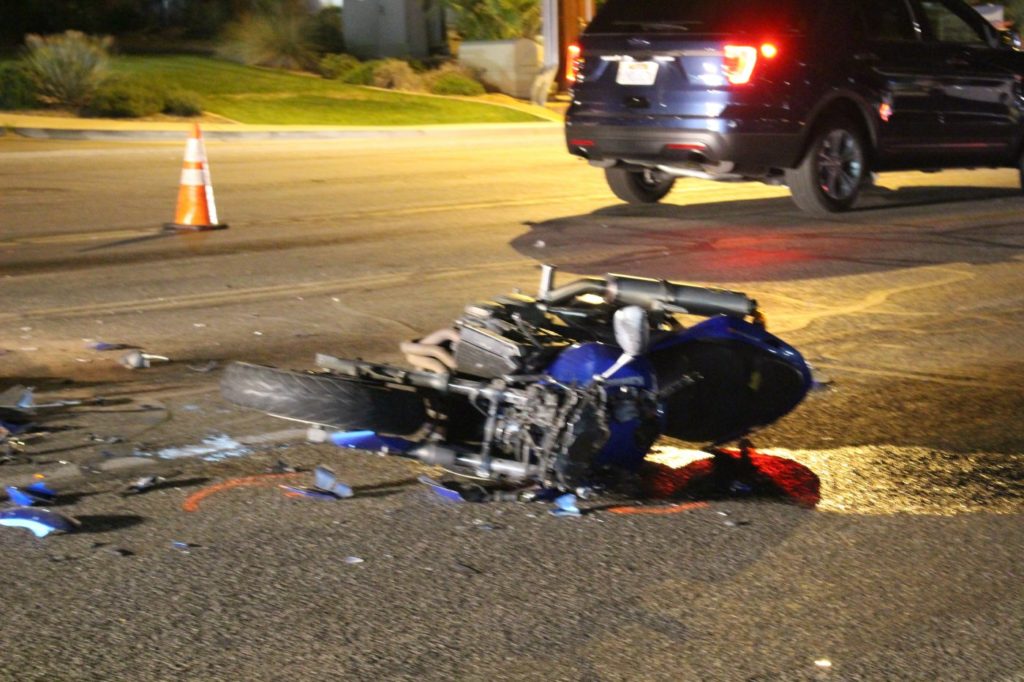
located in California.
In order for a motorcycle helmet to be DOT or Snell-certified, it must pass a series of impact tests.
Both organizations perform rigorous safety tests, including:
- Impact—The helmet’s shock absorbing capacity.
- Penetration—How well the helmet withstands hitting a sharp object.
- Retention—How well the chin strap can stay fastened without breaking.
- Peripheral vision—Helmet must allow minimum side vision of 105 degrees on each side.
Another certification organization is the Economic Commission for Europe. Created in 1958, it is the most common helmet certification internationally required in over 50 countries worldwide.
Footwear
Sturdy, over-the-ankle boots protect a rider from a variety of hazards, including burns from hot exhaust pipes, injuries caused by flying road debris, and boots with slip-resistant, composite soles provide a strong grip on the pavement while keeping a rider’s feet on the pegs. Boots also help protect against ankle and foot injuries in a crash.
Support is crucial because of the pressure involved in riding, especially if the rider is involved in a crash. For example, a rider who weighs 185 pounds on a bike weighing 450 pounds needs to support 635 pounds every time they come to a stop.
Additionally, feet and ankles are remarkably fragile and susceptible to injury. An analysis in 2008 by the National Highway Transportation Safety Administration showed that “motorcyclists sustain more leg injuries than any other type of lower-extremity injury, with bone fractures being more common than soft-tissue injuries.”
Face protection
“The Hurt Report” states that motorcycle riders with shields covering their faces suffered fewer facial injuries than those without. Wind, insects and pebbles may be blown behind a windshield, and face shields come in a variety of designs to fit most any helmet.
Full-face helmets provide face protection and do not impair peripheral vision, as they allow 105 degrees and a human is only capable of using 90 degrees. Most incapacitating and fatal injuries were sustained in crashes where the impact was to the front of the motorcycle, according to the analysis.
Gloves
Full-fingered motorcycle gloves protect hands from blisters, wind, sun and cold and will help prevent cuts, bruises and abrasions in a crash, which is particularly important since humans instinctively try to catch themselves while falling.
Jacket, pants and riding suits
Covering the body with leather or an abrasion-resistant fabric such as Kevlar or ballistic nylon provides a high level of injury protection, providing the only barrier between the rider and the roadway.
A study by the U.S. Department of Transportation shows that the motorcyclist usually separates from the motorcycle at some time during a crash, so “it stands to reason that protective apparel is far more likely to be effective than protective equipment attached to the motorcycle.”
Jeans provide little protection in a crash, and even those claiming to offer protection do not provide anything approaching the impact or abrasion protection of a real pair of motorcycle pants, according to the Motorcycle Safety Federation.
Motorcyclists wearing protective clothing fitted with body armor were significantly less likely to sustain injuries to the protected areas. It is recommended that riders wear abrasive-resistant fabrics or leather to protect against injury, including leather, Kevlar and ballistic nylon.
The general rule of thumb on an average road surface is that one millimeter of flesh is lost for every mile over 30 miles per hour that the rider is traveling when they hit, according to data released by “The Hurt Report.”
Motorcycle safety course
Fewer than half of motorcyclists have completed formal motorcycle safety training, according to the Motorcycle Industry Council, despite the fact that motorcyclists are far more susceptible
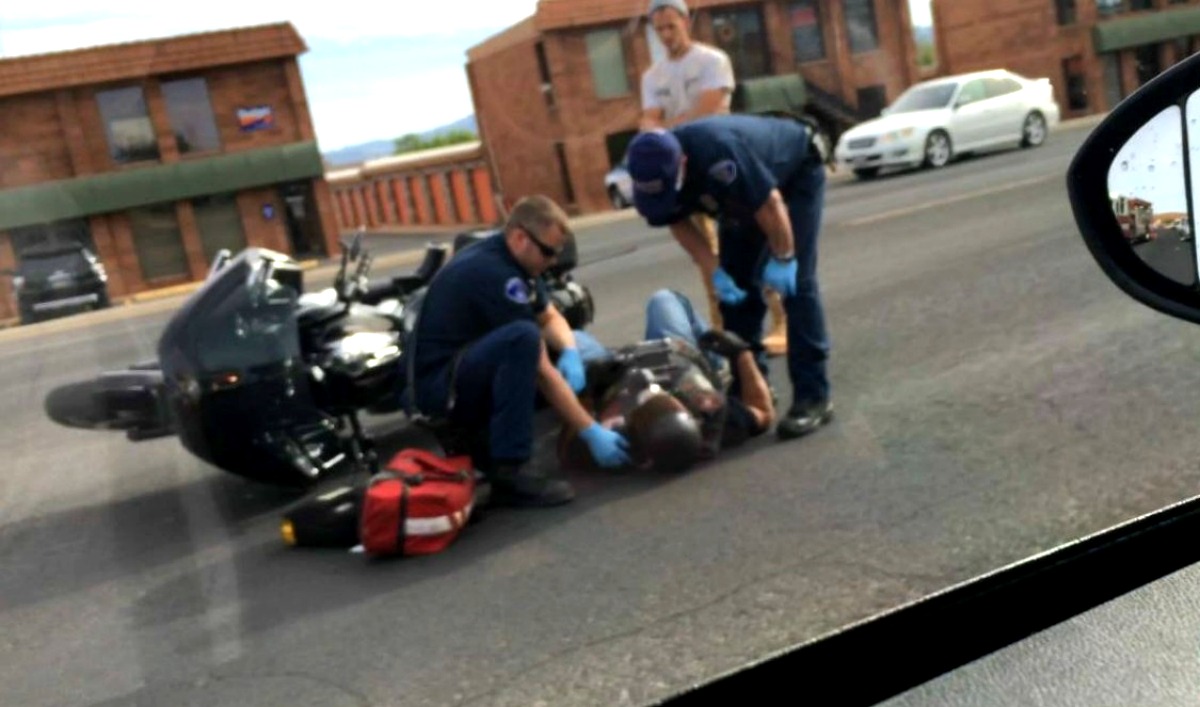
to injuries and fatalities than vehicle occupants. Additionally, more than half of all motorcycle crashes involve riders who have fewer than five months’ experience on the bike.
Motorcycle license classes teach basic skills such as maneuvering, cornering, starting and stopping, mounting and dismounting and crash avoidance techniques.
Safety courses play a key role in motorcyclist safety, for both for novice riders and those who have been riding for some time, St. George Police Sgt. Craig Harding said.
“Motorcycle skills, if not used continuously, diminish over time,” Harding said.
The leading contributor to crashes that involve a motorcycle versus a vehicle is failing to yield the right of way. Safety courses can arm the rider with a skill set that includes avoidance techniques, looking ahead for impending obstacles and quicker reaction skills that could save a motorcyclist’s life, Harding said.
“We have to ride as if every car is going to kill us today,” Harding said, “and then avoid that particular hazard.”
The numbers
In the United States motorcycle fatalities have been on the rise ever since the late 1990s, reaching a record high in 2007 where more than 5,000 riders lost their lives on the nation’s roadways.
Economic losses due to motor vehicle crashes cost the nation approximately $230.6 billion annually – that’s an average of $820 for every person living in the United States.
Experience and training – crash facts:
- 92% of motorcyclists involved in crashes were self-taught or learned from family or friends.
- More than half of the accident-involved motorcycle riders had less than five months experience on that particular motorcycle, but more than three years riding.
- Motorcycle riders in these accidents showed significant collision avoidance problems, the ability to counter-steer and swerve is virtually absent.
- The typical motorcycle accident allows the motorcyclist just less than two seconds to complete all collision avoidance action.
In Washington County there are four locations where safety courses are listed through the Motorcycle Safety Foundation. Two are offered by Dixie State University in St. George, one in Washington through Zion Harley Davidson and another at Sand Hollow State Park through Salt Lake Community College. For more information, click here.
The Utah Department of Public Safety provides information on obtaining a motorcycle endorsement, handbook, and waiting period by clicking here.
Sources:
- Centers for Disease Control and Prevention – Motorcycle Safety
- Justia Law: Simon v. Sargent, 346 F. Supp. 277; D. Mass. 1972.
- Insurance Institute for Highway Safety – 2015
- National Highway Transportation Safety Administration
- National Highway Transportation Safety Administration – The Hurt Report
- 2015 Motor Vehicle Crashes: Overview – NHTSA
- U.S. Department of Transportation – Motorcycle Safety Foundation
- Utah Department of Public Safety – Utah Fatal Crash Summary 2016
Click on photo to enlarge it, then use your left-right arrow keys to cycle through the gallery.
File photo: Emergency responders tend to a motorcycle rider involved in a crash on Sunset Boulevard, St. George, Utah, April 6, 2016 | Photo courtesy of NIkki Six Squires, St. George News
File photo: Aftermath of a car-versus-motorcycle crash on Dixie Drive near Sunset Boulevard that put the motorcycle rider in the hospital, St. George, Utah, May 21, 2016 | Photo by Mori Kessler, St. George News File photo: Aftermath of a car-versus-motorcycle crash on Dixie Drive near Sunset Boulevard that put the motorcycle rider in the hospital, St. George, Utah, May 21, 2016 | Photo by Mori Kessler, St. George News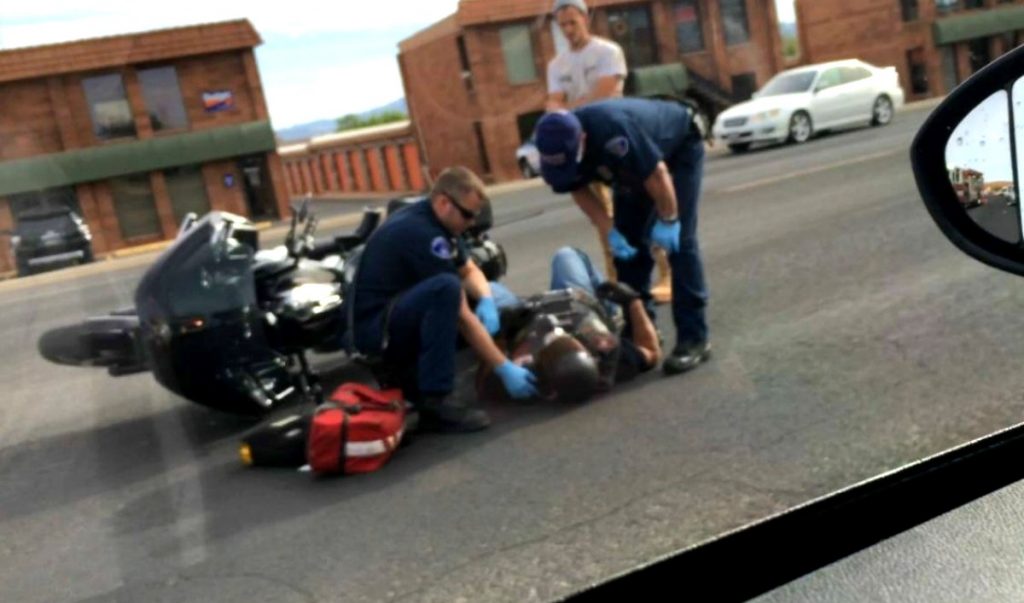


Email: [email protected]
Twitter: @STGnews
Copyright St. George News, SaintGeorgeUtah.com LLC, 2017, all rights reserved.
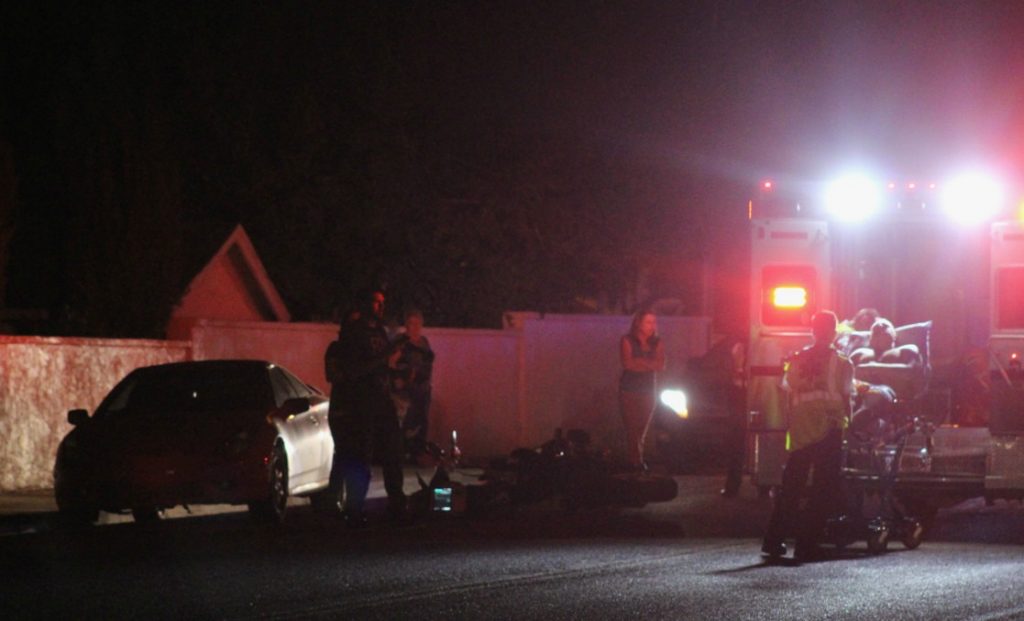

Let’s keep in mind that Washington County enjoys almost twelve months of motorcycle riding weather. Road conditions down here, below 3,000 feet elevation, are essentially snow-free and black ice free during daytime hours, so many more riders can get out on the road compared to being snowed in up North for several Winter-like months.
The Motorcycle Safety Foundation course is an excellent way to supplement the coaching of friends, or family members.
Comparing Northern Utah, including Summit County, to Southwest Utah, I have not experienced much difference, beyond traffic density. The exact same concerns apply – drivers do not respect motorcycles. I can make this broad generalization because, I have been cut off by: young drivers, middle-aged drivers, and elderly drivers. Commercial vehicles can be just as dangerous as passenger cars.
There is no substitute for driving defensively, every day……….
I see motorcycles drivers squeezing between cars on bluff st. Flying down Dixie drive, etc. My dad use to say. You don,t have to be crazy to ride a motorcycle , but it helps..ha. Wish helmets were mandatory too.. I see drivers with flip flop ins, and girls riding behind the drivers in skimpy clothes and rubber flip flops…
As a life long motorcyclist, I appreciate the information in the Advisory. And I agree that driving defensively is important. Concerning the statistics, do you have any idea of those accidents involved tourists? We live in a beautiful area, and visitors often watch the scenery, not the road. Just curious. Riders, keep the shiny side up!
In my younger days I used to do t-shirt and jeans riding. Would never do it now–older and wiser I guess. I believe the term now is ‘squiding’. Don’t think we had this term years ago.
I know the younger guys think its dorky but high-vis gear actually will save your life. When people say they don’t see you they aren’t lying.
It’s my opinion that the beginner msf course is nearly useless for those with experience. Don’t take this and expect to be a competent rider. There is no substitute for experience out on the road, and puttering around in a parking lot won’t cut it. It’s very redundant and a huge portion of the course is geared toward those who’ve never even been on a bike. I’d say go for the advanced msf course if u can. But for those with near 0 experience, yes take the beginner msf course.
All that said. My street riding days are probably in the past. Riding is fun as hell but one of the best ways to get killed or paralyzed. I’d never “recommend” to anyone I care about to get into riding.
All great comments, but may I present the things that I experienced in the 11 years that I’ve lived in Dixie? The things I’ve dealt with most often, was the elderly people pulling out in front of me, people running red lights, and tailgaters. It got so bad that riding was no longer fun and eventually led to me selling my bike.